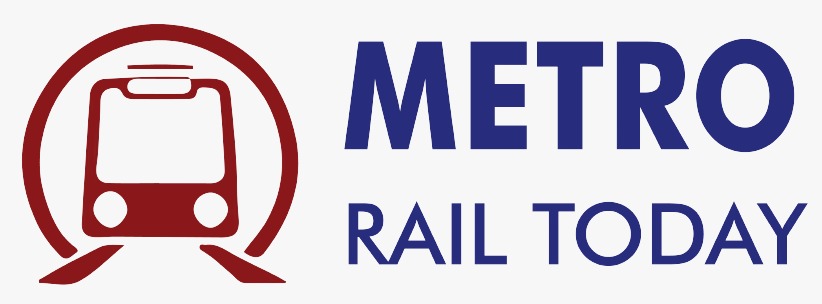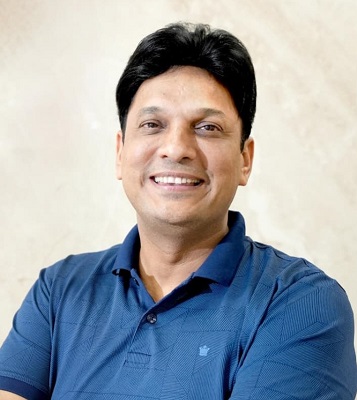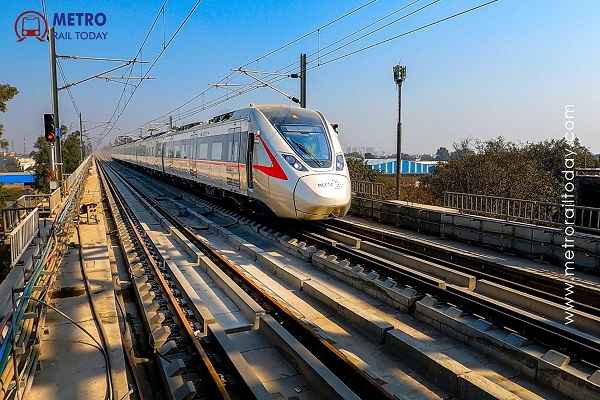 NCRTC Introduces Drone-Based OHE Monitoring on Delhi-Meerut Namo Bharat RRTS Corridor
NCRTC Introduces Drone-Based OHE Monitoring on Delhi-Meerut Namo Bharat RRTS Corridor Iraq approves contract for 90 km Najaf–Karbala Metro Rail Project
Iraq approves contract for 90 km Najaf–Karbala Metro Rail Project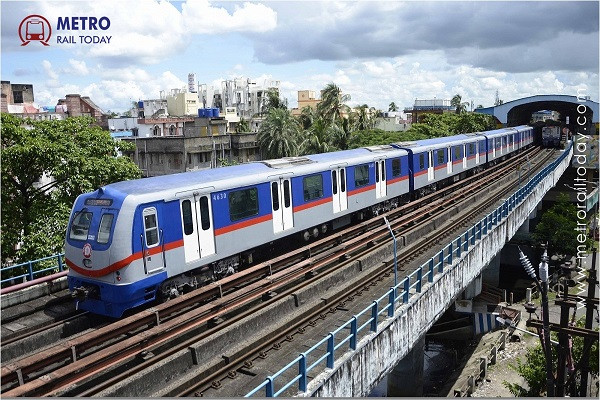 Subhransu Sekhar Mishra takes charge as new General Manager of Kolkata Metro Railway
Subhransu Sekhar Mishra takes charge as new General Manager of Kolkata Metro Railway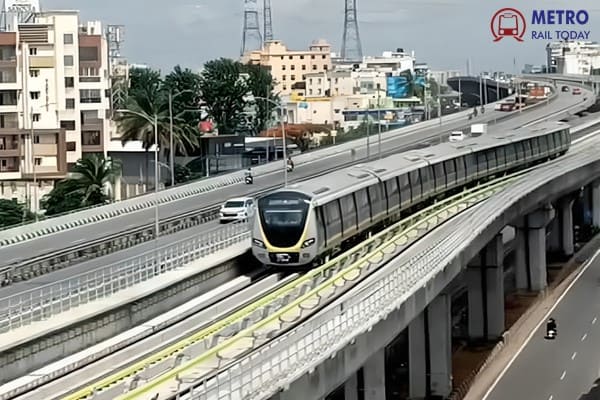 Hitachi Rail GTS India Wins ₹76 Crore AFC Contract for Bangalore Metro Phase 2A & 2B
Hitachi Rail GTS India Wins ₹76 Crore AFC Contract for Bangalore Metro Phase 2A & 2B L&T Technology Services Bags ₹70 Crore AFC Contract for Mumbai Metro Line 7A & 9
L&T Technology Services Bags ₹70 Crore AFC Contract for Mumbai Metro Line 7A & 9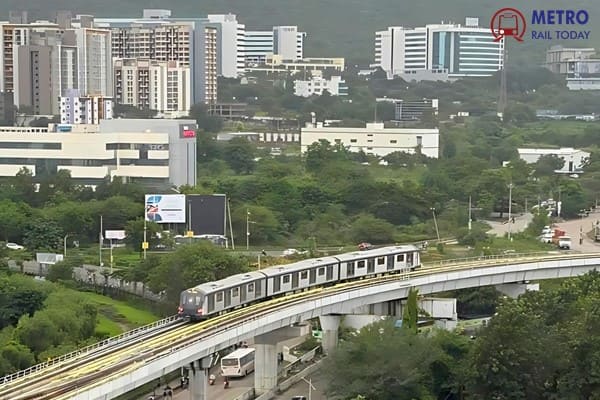 Larsen & Toubro Bags ₹4,788 Crore System Contract for Mumbai Metro Line 4 & 4A
Larsen & Toubro Bags ₹4,788 Crore System Contract for Mumbai Metro Line 4 & 4A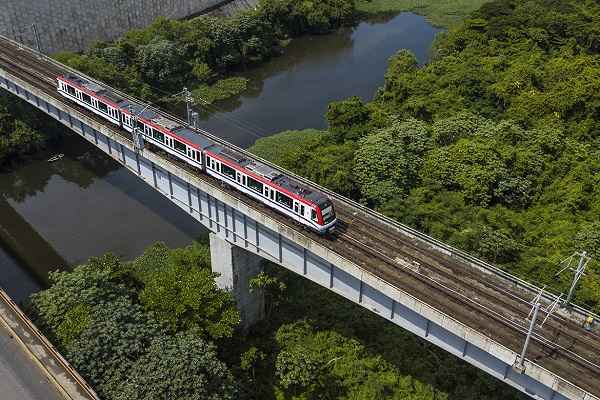 Poland unveils 29-km new metro rail plan for Krakow with 10-years deadline
Poland unveils 29-km new metro rail plan for Krakow with 10-years deadline BEML seeks Expression of Interests from Global Leaders for Indigenous TBM Manufacturing in India
BEML seeks Expression of Interests from Global Leaders for Indigenous TBM Manufacturing in India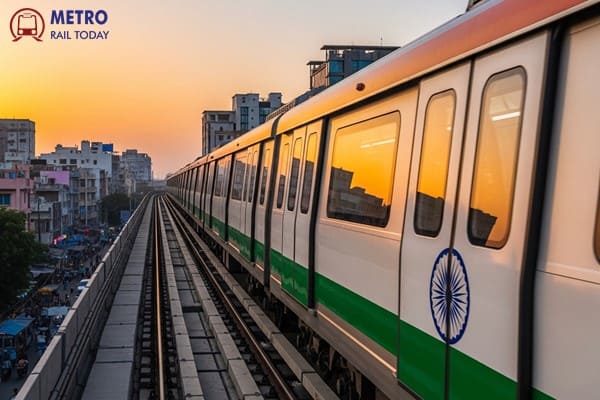 Lucknow Orbital Rail Corridor set to redefine Northern India's connectivity and Logistics Landscape
Lucknow Orbital Rail Corridor set to redefine Northern India's connectivity and Logistics Landscape Evelyn Palla appointed CEO of Deutsche Bahn AG, Becomes First Woman to lead the company
Evelyn Palla appointed CEO of Deutsche Bahn AG, Becomes First Woman to lead the company
Why Delhi Metro’s Fare Hike is a Fair Hike?
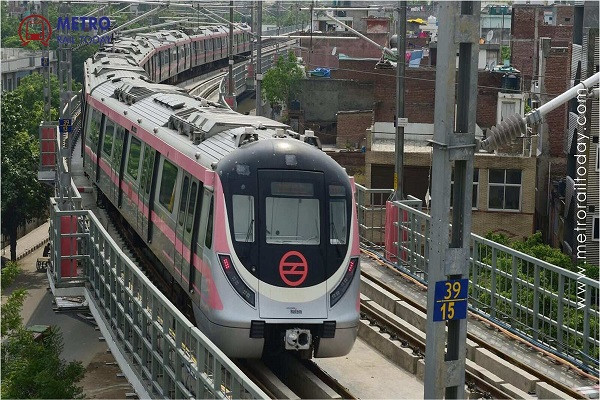
When the first Delhi Metro train pulled out of the Shahdara station in December 2002, no one could have speculated that one day it would become the lifeline of the city, carrying not only passengers but also opportunities, dreams, and aspirations. Struggling to absorb the daily commuter load to the tune of tens of millions, Delhi generally trips over its notorious traffic congestion, but it is the metro that has brought cheer to the faces of the hoi polloi and earned the national capital a world-class urban transport system by moving the colossal population of the city and surrounding areas, connecting the National Capital Region with efficiency, reliability, and sustainability. Despite becoming the pulse of the city and a dependable transport mode for one and all, it has never pinched financially for metro users. Since its inception, the fare has been so fair that daily passengers are reported to have vociferously said, "Fair Enough!"
On its fast-track journey towards a world-class ride, Delhi Metro Rail Corporation (DMRC) has always toyed with innovation and cutting-edge facilities to provide all possible comforts to passengers with quality and security. In its bid to operate efficiently in the face of evolving technology with the arrival of AI and machine learning, DMRC has taken justified steps to hike ticket prices for the first time in eight years, having done so previously in 2017. The price revision, effective from August 25, 2025, is nominal, with fares increasing by Re 1 to Rs 4 on all lines, and the Airport Express Line increasing by Rs 5. Expansion of the metro network with swanky stations and new corridors, boosting last-mile connectivity, and infrastructural development of public transportation are at the centre-stage of the agenda of the PM Modi-led government. The fare hike, albeit minuscule, underlines the significance of sustainable revenue for infrastructure upkeep, energy costs, and future network expansion as the Delhi Metro is all set to play a key role in the vision of Viksit Dilli, Viksit Bharat.
Unequivocally, it could be said that the fare hike is not about laughing all the way to the bank for DMRC. Essentially, it has carved its niche as a world-class public transport system and becomes a reliable track whenever traffic pressure mounts in the national capital. Delhi Metro triumphantly blew its whistle, registering the highest passenger journey at nearly 81.9 lakh on August 9, 2025. DMRC not only handled this surge successfully on the occasion of Raksha Bandhan but also facilitated an easy-going experience for cementing family relations, carrying the bogies of cultural bonding by running 455 additional trips on that very day. The history made on the tracks strongly drives home the message that passengers have intense trust in the Delhi Metro's punctuality and reliability. So, Delhi Metro does not carry passengers only but also promises and progress. Compared with Namma Metro's steep fare hike of up to 71 percent in Bengaluru earlier this year, DMRC has an average increase of around 7 percent. Lo and behold, the modest fare revision for Delhiites literally rings in a tone of neighbour's-envy-owner's-pride, making Bengalureans take umbrage at the steep fare hike by Bangalore Metro Rail Corporation Ltd.
The Delhi Metro is no longer just a mode of transport; rather, it has pulsed through the heart of India's growth story by providing a fair ride to people who have put in their efforts to make Delhi record an annual growth of 5.8 percent in gross state domestic product and 7 percent in per capita income in the last decade, as the Delhi government's Directorate of Economics and Statistics recently reported. Concerted efforts by the government and all stakeholders are profoundly needed to make Delhi Metro more accessible and comfortable. The focus on more feeder services to bridge the gap in last-mile connectivity, integration with other transport networks, and continuous work on making it more passenger-friendly with service improvements and crowd management override the minimal jerk of price revision. A strong push by the ruling establishment at the Centre and Delhi government for automation, digitalization, sustainability, embracing new technology, and smooth connectivity has put Delhi Metro on the fast track to gather the pace to travel miles and miles for India's journey of becoming the world's third-largest economy by setting many more milestones on the public mobility map.
